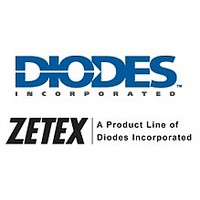AP2151DWG-7 Diodes Zetex, AP2151DWG-7 Datasheet - Page 11

AP2151DWG-7
Manufacturer Part Number
AP2151DWG-7
Description
Manufacturer
Diodes Zetex
Datasheet
1.AP2151DWG-7.pdf
(17 pages)
Specifications of AP2151DWG-7
Lead Free Status / RoHS Status
Supplier Unconfirmed
Available stocks
Company
Part Number
Manufacturer
Quantity
Price
Part Number:
AP2151DWG-7
Manufacturer:
DIODES/美台
Quantity:
20 000
Application Note
Thermal Protection
Thermal protection prevents the IC from damage when the
die temperature exceeds safe margins. This mainly occurs
when heavy-overload or short-circuit faults are present for
extended periods of time. The AP2141D/AP2151D
implements thermal sensing to monitor the operating
junction temperature of the power distribution switch. Once
the die temperature rises to approximately 140°C, the
Thermal protection feature gets activated as follows: The
internal thermal sense circuitry turns the power switch off
and the FLG output is asserted thus preventing the power
switch from damage. Hysteresis in the thermal sense
circuit allows the device to cool down to approximately
25°C before the output is turned back on. The built-in
thermal hysteresis feature avoids undesirable oscillations
of the thermal protection circuit. The switch continues to
cycle in this manner until the load fault is removed,
resulting in a pulsed output. The FLG open-drain output is
asserted when an over-current occurs with 7-ms deglitch.
Reverse Current Protection
In a normal MOSFET switch, current can flow in reverse
direction (from the output side to the input side) when the
output side voltage is higher than the input side, even
when the switch is turned off. A reverse-current blocking
feature is implemented in the AP21x1 series to prevent
such back currents. This circuit is activated by the
difference between the output voltage and the input
voltage. When the switch is disabled, this feature blocks
reverse current flow from the output back to the input.
Special Functions:
Discharge Function
When enable is de-asserted, the discharge function is
active. The output capacitor is discharged through an
internal NMOS that has a discharge resistance of 100Ω.
Hence, the output voltage drops down to zero. The time
taken for discharge is dependent on the RC time constant
of the resistance and the output capacitor.
FLG Response
The FLG open-drain output goes active low for any of the
two conditions: Over-Current or Over-Temperature. The
time from when a fault condition is encountered to when
the FLG output goes low is 7-ms (TYP). The FLG output
remains low until both over-current and over-temperature
conditions are removed. Connecting a heavy capacitive
load to the output of the device can cause a momentary
Over-current condition, which does not trigger the
FLG due to the 7-ms deglitch timeout. The 7-ms timeout is
also applicable for Over-current recovery and Thermal
recovery. The AP2141D/AP2151D are designed to
eliminate erroneous Over-current reporting without the
need for external components, such as an RC delay
network.
AP2141D/2151D
Document number: DS32242 Rev. 2 - 2
(Continued)
0.5A SINGLE CHANNEL CURRENT-LIMITED POWER
www.diodes.com
11 of 17
Applications Information:
Power Supply Considerations
A 0.01-μF to 0.1-μF X7R or X5R ceramic bypass
capacitor between IN and GND, close to the device, is
recommended. This limits the input voltage drop during
line transients. Placing a high-value electrolytic capacitor
on the input (10-μF minimum) and output pin(s) is
recommended when the output load is heavy. This
precaution also reduces power-supply transients that
may cause ringing on the input. Additionally, bypassing
the output with a 0.01-μF to 0.1-μF ceramic capacitor
improves the immunity of the device to short-circuit
transients. This capacitor also prevents the output from
going negative during turn-off due to inductive parasitics.
Power Dissipation and Junction Temperature
The low on-resistance of the internal MOSFET allows the
small surface-mount packages to pass large current.
Using the maximum operating ambient temperature (T
and R
The junction temperature can be calculated by:
Where:
Generic Hot-Plug Applications
In many applications it may be necessary to remove
modules or PC boards while the main unit is still
operating. These are considered hot-plug applications.
Such implementations require the control of current
surges as seen by the main power supply and the card
being inserted. The most effective way to control these
surges is to limit and slowly ramp up the current and
voltage being applied to the card, similar to the way in
which a power supply normally turns on. Due to the
controlled rise and fall times of the AP2141D/AP2151D,
these devices can be used to provide a softer start-up to
devices being hot-plugged into a powered system. The
UVLO feature of the AP2141D/AP2151D also ensures
that the switch is off after the card has been removed,
and that the switch is off during the next insertion.
By
VCC input and the rest of the circuitry, the input power
reaches these devices first after insertion. The typical rise
time of the switch is approximately 1ms, providing a slow
voltage ramp at the output of the device. This
implementation controls the system surge current and
provides a hot-plugging mechanism for any device.
placing
SWITCH WITH OUTPUT DISCHARGE
DS(ON)
P
T
T
R
P
J
A
D
θ JA
D
= Ambient temperature °C
= P
= R
= Total power dissipation
= Thermal resistance
, the power dissipation can be calculated by:
D
DS(ON)
AP2141D/AP2151D
x R
the
θ JA
× I
+ T
2
AP2141D/AP2151D
A
© Diodes Incorporated
September 2010
between
the
A
)
















